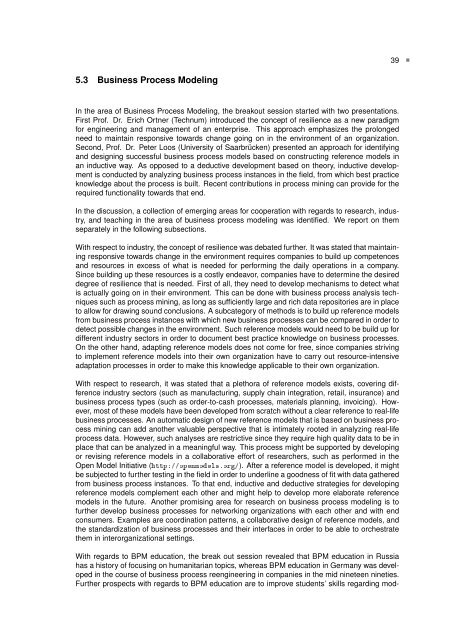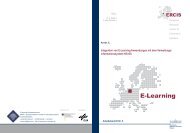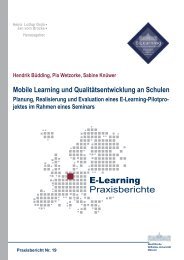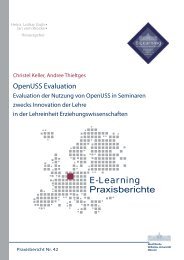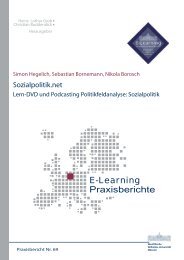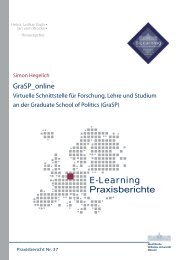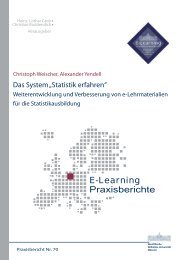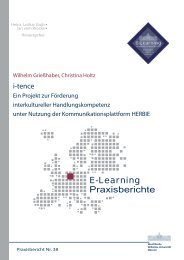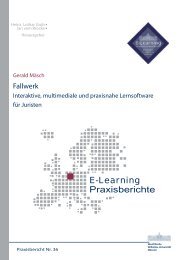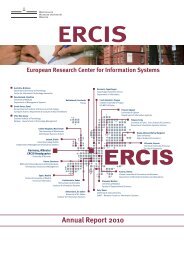Promoting Business Process Management Excellence in Russia
Promoting Business Process Management Excellence in Russia
Promoting Business Process Management Excellence in Russia
You also want an ePaper? Increase the reach of your titles
YUMPU automatically turns print PDFs into web optimized ePapers that Google loves.
39<br />
<br />
5.3 <strong>Bus<strong>in</strong>ess</strong> <strong>Process</strong> Model<strong>in</strong>g<br />
In the area of <strong>Bus<strong>in</strong>ess</strong> <strong>Process</strong> Model<strong>in</strong>g, the breakout session started with two presentations.<br />
First Prof. Dr. Erich Ortner (Technum) <strong>in</strong>troduced the concept of resilience as a new paradigm<br />
for eng<strong>in</strong>eer<strong>in</strong>g and management of an enterprise. This approach emphasizes the prolonged<br />
need to ma<strong>in</strong>ta<strong>in</strong> responsive towards change go<strong>in</strong>g on <strong>in</strong> the environment of an organization.<br />
Second, Prof. Dr. Peter Loos (University of Saarbrücken) presented an approach for identify<strong>in</strong>g<br />
and design<strong>in</strong>g successful bus<strong>in</strong>ess process models based on construct<strong>in</strong>g reference models <strong>in</strong><br />
an <strong>in</strong>ductive way. As opposed to a deductive development based on theory, <strong>in</strong>ductive development<br />
is conducted by analyz<strong>in</strong>g bus<strong>in</strong>ess process <strong>in</strong>stances <strong>in</strong> the field, from which best practice<br />
knowledge about the process is built. Recent contributions <strong>in</strong> process m<strong>in</strong><strong>in</strong>g can provide for the<br />
required functionality towards that end.<br />
In the discussion, a collection of emerg<strong>in</strong>g areas for cooperation with regards to research, <strong>in</strong>dustry,<br />
and teach<strong>in</strong>g <strong>in</strong> the area of bus<strong>in</strong>ess process model<strong>in</strong>g was identified. We report on them<br />
separately <strong>in</strong> the follow<strong>in</strong>g subsections.<br />
With respect to <strong>in</strong>dustry, the concept of resilience was debated further. It was stated that ma<strong>in</strong>ta<strong>in</strong><strong>in</strong>g<br />
responsive towards change <strong>in</strong> the environment requires companies to build up competences<br />
and resources <strong>in</strong> excess of what is needed for perform<strong>in</strong>g the daily operations <strong>in</strong> a company.<br />
S<strong>in</strong>ce build<strong>in</strong>g up these resources is a costly endeavor, companies have to determ<strong>in</strong>e the desired<br />
degree of resilience that is needed. First of all, they need to develop mechanisms to detect what<br />
is actually go<strong>in</strong>g on <strong>in</strong> their environment. This can be done with bus<strong>in</strong>ess process analysis techniques<br />
such as process m<strong>in</strong><strong>in</strong>g, as long as sufficiently large and rich data repositories are <strong>in</strong> place<br />
to allow for draw<strong>in</strong>g sound conclusions. A subcategory of methods is to build up reference models<br />
from bus<strong>in</strong>ess process <strong>in</strong>stances with which new bus<strong>in</strong>ess processes can be compared <strong>in</strong> order to<br />
detect possible changes <strong>in</strong> the environment. Such reference models would need to be build up for<br />
different <strong>in</strong>dustry sectors <strong>in</strong> order to document best practice knowledge on bus<strong>in</strong>ess processes.<br />
On the other hand, adapt<strong>in</strong>g reference models does not come for free, s<strong>in</strong>ce companies striv<strong>in</strong>g<br />
to implement reference models <strong>in</strong>to their own organization have to carry out resource-<strong>in</strong>tensive<br />
adaptation processes <strong>in</strong> order to make this knowledge applicable to their own organization.<br />
With respect to research, it was stated that a plethora of reference models exists, cover<strong>in</strong>g difference<br />
<strong>in</strong>dustry sectors (such as manufactur<strong>in</strong>g, supply cha<strong>in</strong> <strong>in</strong>tegration, retail, <strong>in</strong>surance) and<br />
bus<strong>in</strong>ess process types (such as order-to-cash processes, materials plann<strong>in</strong>g, <strong>in</strong>voic<strong>in</strong>g). However,<br />
most of these models have been developed from scratch without a clear reference to real-life<br />
bus<strong>in</strong>ess processes. An automatic design of new reference models that is based on bus<strong>in</strong>ess process<br />
m<strong>in</strong><strong>in</strong>g can add another valuable perspective that is <strong>in</strong>timately rooted <strong>in</strong> analyz<strong>in</strong>g real-life<br />
process data. However, such analyses are restrictive s<strong>in</strong>ce they require high quality data to be <strong>in</strong><br />
place that can be analyzed <strong>in</strong> a mean<strong>in</strong>gful way. This process might be supported by develop<strong>in</strong>g<br />
or revis<strong>in</strong>g reference models <strong>in</strong> a collaborative effort of researchers, such as performed <strong>in</strong> the<br />
Open Model Initiative (http://openmodels.org/). After a reference model is developed, it might<br />
be subjected to further test<strong>in</strong>g <strong>in</strong> the field <strong>in</strong> order to underl<strong>in</strong>e a goodness of fit with data gathered<br />
from bus<strong>in</strong>ess process <strong>in</strong>stances. To that end, <strong>in</strong>ductive and deductive strategies for develop<strong>in</strong>g<br />
reference models complement each other and might help to develop more elaborate reference<br />
models <strong>in</strong> the future. Another promis<strong>in</strong>g area for research on bus<strong>in</strong>ess process model<strong>in</strong>g is to<br />
further develop bus<strong>in</strong>ess processes for network<strong>in</strong>g organizations with each other and with end<br />
consumers. Examples are coord<strong>in</strong>ation patterns, a collaborative design of reference models, and<br />
the standardization of bus<strong>in</strong>ess processes and their <strong>in</strong>terfaces <strong>in</strong> order to be able to orchestrate<br />
them <strong>in</strong> <strong>in</strong>terorganizational sett<strong>in</strong>gs.<br />
With regards to BPM education, the break out session revealed that BPM education <strong>in</strong> <strong>Russia</strong><br />
has a history of focus<strong>in</strong>g on humanitarian topics, whereas BPM education <strong>in</strong> Germany was developed<br />
<strong>in</strong> the course of bus<strong>in</strong>ess process reeng<strong>in</strong>eer<strong>in</strong>g <strong>in</strong> companies <strong>in</strong> the mid n<strong>in</strong>eteen n<strong>in</strong>eties.<br />
Further prospects with regards to BPM education are to improve students’ skills regard<strong>in</strong>g mod-


